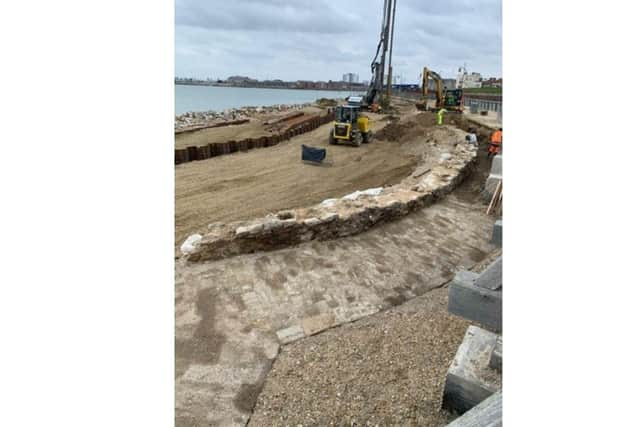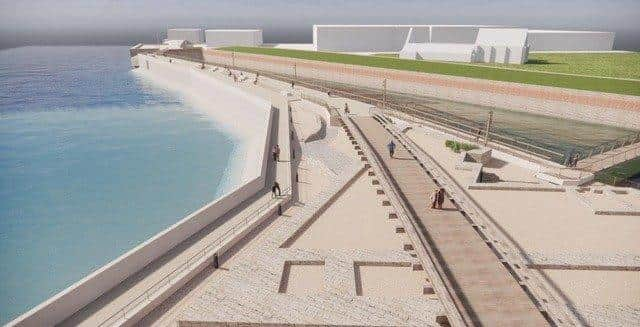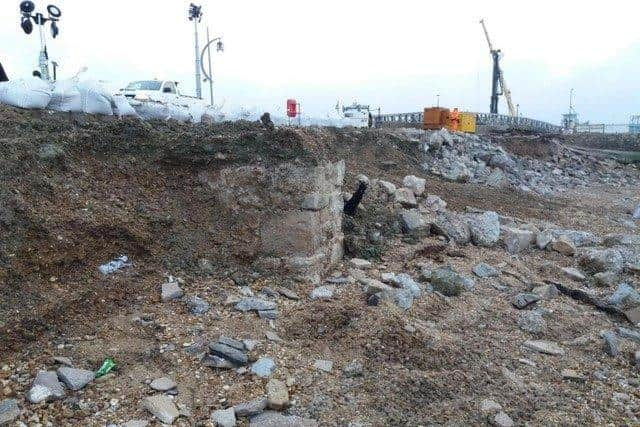Southsea sea defences set to be re-routed after 18th century wall is discovered in excavation
and live on Freeview channel 276
As part of the £130m Southsea Coastal Scheme, a pile line had been set to go through the ground behind the sea wall but a storm swell 18 months ago exposed a section of the wall and promenade on its course.
Following discussions with Historic England, Coastal Partners has now submitted plans to the city council to alter the design of the flood defences at Long Curtain Moat.


Advertisement
Hide AdAdvertisement
Hide AdIt said the changes would leave the 'very important remains' where they are while also allowing them to be seen by the public.
'[The wall] is in reasonable condition and Historic England were extremely keen to have it preserved in situ,' its application says. 'Unfortunately the Southsea Scheme pile line was proposed to run straight through one section of the remains that protruded.
'Options were discussed with Historic England and the planning authority and it was agreed that the most appropriate action would be to alter the pile line to avoid causing any irreversible harm too the historic remains.'
It says the change was 'very minor' given the scale of the overall project and said it was 'unlikely to be noticeable on the ground'.


Advertisement
Hide AdAdvertisement
Hide Ad'The amendments result in a positive change to the impact of the scheme, allowing enhanced interpretation and newly discovered features to be visible,' it add.'
Iain Bright is Historic England's inspector of ancient monuments for the region.
‘The alteration to the design represents a significant heritage benefit,' he said in an email requesting details of how the uncovered wall would be preserved.
The plan has been submitted to the council as an amendment to the 2019 scheme which has already been approved.


Advertisement
Hide AdAdvertisement
Hide AdA deadline of September 22 has been for the council to reach a decision on whether to approve it.
Several finds of historical interest have already been made during the work, such as a copper bell believed to be from the Victorian era which was found in Castle Field in the summer.
